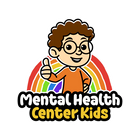|
Key Takeaways:
- Children can develop trauma from familial abuse, the death of a loved one, socioeconomic status, social issues, and mental health conditions.
- Trauma therapy can help children acknowledge troubling thoughts and behaviors and provide them with healthier ways to cope.
- Types of trauma therapy for children include play therapy, art therapy, cognitive behavioral therapy, and family therapy.
|
Childhood trauma can be devastating for a child, but it doesn’t have to affect their entire lives. Trauma therapy for children can equip them with helpful tools to overcome their fears, face triggers, and become more confident. Learn the different types of trauma therapy and how they can address specific childhood issues.
The Importance of Addressing Childhood Trauma Early
Early intervention for childhood trauma is imperative because it can minimize adverse social and emotional effects [*]. When children don’t receive the appropriate support, they become at risk of developing the following:
- Learning disabilities
- Poor academic performance
- Toxic relationships
- Sleep problems
-
Anxiety and depression
- Substance abuse
By addressing childhood trauma early, you can avoid long-term effects like difficulties in school and in professional settings.
Common Causes of Trauma in Children
According to the Substance Abuse and Mental Health Services Administration’s National Child Traumatic Stress Initiative, over two-thirds of children will experience at least one traumatic event by the time they’re 16 [*]. These traumatic events and common causes include the following:
- Psychological, physical, or sexual abuse
- The death of a loved one
- Divorce in the family
- Neglect
- Refugee or war experiences
- Serious accidents or life-threatening illnesses
Signs a Child May Need Trauma Therapy
Trauma can profoundly affect a child’s sense of safety and security, and they’ll show signs of it. It can also affect the brain. After experiencing trauma, a child may be fearful of their environment and withdraw from social groups or their favorite activities. It’s also possible for adults to display signs of childhood trauma. Other signs a child may need trauma therapy include:
- Hypervigilance or hyperarousal to various stimuli
- Avoidance of anything related to the traumatic event
- Intrusive, unwanted, and troubling thoughts
- Recurring nightmares about the traumatic event
- Physical symptoms like trouble sleeping or experiencing constant fatigue
How trauma manifests in children may also depend on their age. Children who experience trauma between three and eight tend to display unmanageable behaviors like aggression or non-compliance, whereas kids in middle childhood may demonstrate regression or troubles in school.
Benefits of Trauma Therapy for Children
Trauma therapy helps restore a child’s confidence, allowing them to share and process their feelings safely. Over time, they learn to deal with trauma triggers they’ve long avoided and become more self-reliant.
Trauma therapy can also:
- Improve a child’s relationship with their family and friends
- Instill healthy coping mechanisms and ways of reflection
- Reduce trauma symptoms, such as anxiety, depression, and nightmares
- Restore trust with other people
- Increase understanding among parents, caregivers, and others involved in the child’s life
Types of Trauma Therapy for Children
There are many different therapeutic approaches for managing and processing childhood trauma. What type of therapy you select is crucial to your child’s healing journey.
When finding the most suitable options for your child, ensure that they are conducive to your child’s specific needs. Assess the therapist’s experience and credentials—don’t hesitate to sit down with them and ask a lot of questions!
Here are the different types of trauma therapy you can consider for your child.
Trauma-Focused Cognitive Behavioral Therapy (TF-CBT)
Trauma-focused cognitive behavioral therapy (TF-CBT) is specific to children with post-traumatic stress disorder (PTSD) and mood disorders resulting from childhood sexual or physical abuse [*]. Like general CBT, this psychotherapy aims to replace unhelpful thoughts and behaviors with positive ones.
TF-CBT is effective in treating children between three and 18, with reported benefits such as:
- Improved sleep quality
- Reduced nightmares
- Feeling more at ease and relaxed
- Reduced traumatic flashbacks and memories
- Fewer intrusive thoughts
To achieve these goals, children must undergo three stages:
-
Stabilization and skill-building. Children develop relaxation techniques for when they encounter triggers. For instance, therapists may teach age-appropriate coping skills like deep breathing, progressive muscle relaxation (PMR), or using toys to lower tension in the body. They learn to recognize specific emotions that arise.
-
Trauma narration and processing. With a better understanding of their emotions and experiences, children start processing the traumatic event.
-
Integration and consolidation of lessons learned. Children start avoiding their trauma less and work alongside parents or caregivers to master their coping techniques.
Eye Movement Desensitization and Reprocessing (EMDR)
This new and novel therapy treats PTSD in children by relying on the child’s rapid and rhythmic eye movements [*]. Eye movement desensitization and reprocessing (EMDR) does not employ talk therapy—instead, it focuses on changing negative emotions through adaptive information processing (AIP).
When children experience something traumatic, the brain can feel like it’s “malfunctioning” or disconnecting from what the child feels, sees, and hears. EMDR aims to prevent these occurrences from disrupting a child’s ability to cope.
During an EMDR session, which can last as long as 90 minutes, therapists ask children to follow certain hand movements with their eyes while recalling a traumatic event. As the child follows these hand movements, the therapist will help them develop a more positive attitude and shift their focus toward healing.
Play Therapy
Play is an integral part of anyone’s childhood, as it can improve a child’s social and emotional skills. However, children with unresolved trauma may struggle to find joy in playing, especially with other kids.
Through play therapy, emotionally stunted children can learn to connect with others and find healthy ways to self-soothe [*]. Play therapy is an excellent outlet for children in foster care or who may have experienced abuse or neglect from their primary caregivers.
Play therapy can be:
- Directive, wherein the therapist will set a clear goal for the child
- Non-directive, wherein the child is free to play however they want
During play therapy, the facilitator may encourage activities like:
- Arts and crafts
- Dolls and action figures
- Role-playing or make-believe
- Storytelling
Art Therapy
Children who’ve experienced trauma may struggle to express themselves verbally. Fortunately, art therapy provides a non-verbal way for children to face and embrace emotions associated with past trauma.
In art therapy, the act of creating is a medium to provide psychotherapy. A registered art therapist will use art as an outlet for improving communication, processing trauma, and improving a child’s emotion management.
Art therapy is best for children who have PTSD, anxiety, depression, and stress related to family or relationship problems. It is also effective for children struggling primarily with social problems in school.
This unique and engaging type of therapy takes many forms—not just visual art. An art therapist might use storytelling, dance, drama, and music.
Family Therapy
It can be particularly challenging for families to recover from a traumatic event, such as losing a loved one or going through a divorce. Family therapy aims to improve communication and coping systems between family members and bring everyone together as a whole [*].
Trauma-focused family therapy is best for families that have experienced marital issues, financial problems, or conflicts between a parent and a child. It can take multiple forms, such as:
- Functional therapy, in which adolescents and teens might display reckless and risky behaviors
- Family systems therapy, in which families focus on their strengths as coping mechanisms
- Psychoeducation, in which families learn to better understand mental health conditions
- Narrative therapy, in which families process how each member experiences the same traumatic event
- Supportive therapy, in which families focus on creating safe and secure environments for each other
Exposure Therapy
Children who have experienced trauma may become severely averse to anything related to that trauma. These fears can involve a specific person, place, or thing and evolve into conditions like PTSD or anxiety.
Exposure therapy helps children overcome these fears through gradual or rapid exposure to their triggers [*]. It is also helpful for children experiencing extreme separation anxiety, OCD, and social problems.
During exposure therapy, which typically occurs over 12 to 16 sessions, professionals help children understand and face anxiety-provoking situations. They work with the child to break their fears into several situations. For instance, a child who is afraid of swimming may experience different “levels” of fear, such as looking at a photo of a pool or wading in shallow water.
The Role of Parents in Trauma Therapy
Parents play a significant role in their child’s healing, as they are responsible for providing safe environments in which the child can express themselves and voice concerns. Parents need to work closely with the child’s therapist so they can learn how to be better listeners and find more productive ways to respond to outbursts, panic attacks, and tantrums.
Parents can also help children practice their coping skills at home and provide valuable information to the child’s therapist. They can provide additional support by checking in with their child, providing praise for their progress, and developing positive routines.
The Bottom Line
Trauma therapy for children requires a lot of time, effort, and patience. By sticking through it, your child doesn’t have to feel like a victim. Instead, they can overcome their fears and find better ways to cope in the future.
Help your child through their recovery by using our trauma worksheets. You can enjoy them at home, in school, or in a therapy setting.
Sources:
- Buss KE, Warren JM, Horton E. “Trauma and Treatment in Early Childhood: A Review of the Historical and Emerging Literature for Counselors.” The Professional Counselor, 2015.
- “Understanding Child Trauma.” Substance Abuse and Mental Health Services Administration, 2024.
- Ramirez MA, D. Russell Lyman, Jobe-Shields L, et al. “Trauma-Focused Cognitive-Behavioral Therapy for Children and Adolescents: Assessing the Evidence.” Psychiatric Services, 2014.
- Gainer D, Alam S, Alam H, Redding H. “A FLASH OF HOPE: Eye Movement Desensitization and Reprocessing (EMDR) Therapy.” Innovations in Clinical Neuroscience, 2020.
- Humble JJ, Summers NL, Villarreal V, et al. “Child-Centered Play Therapy for Youths Who Have Experienced Trauma: a Systematic Literature Review.” Journal of Child & Adolescent Trauma, 2018.
- Boyer W. “Trauma-Focused Family Therapy With Children and Their Families.” The Family Journal, 2019.
- Plaisted H, Waite P, Gordon K, Creswell C. “Optimising Exposure for Children and Adolescents with Anxiety, OCD and PTSD: A Systematic Review.” Clinical Child and Family Psychology Review, 2021.





















































